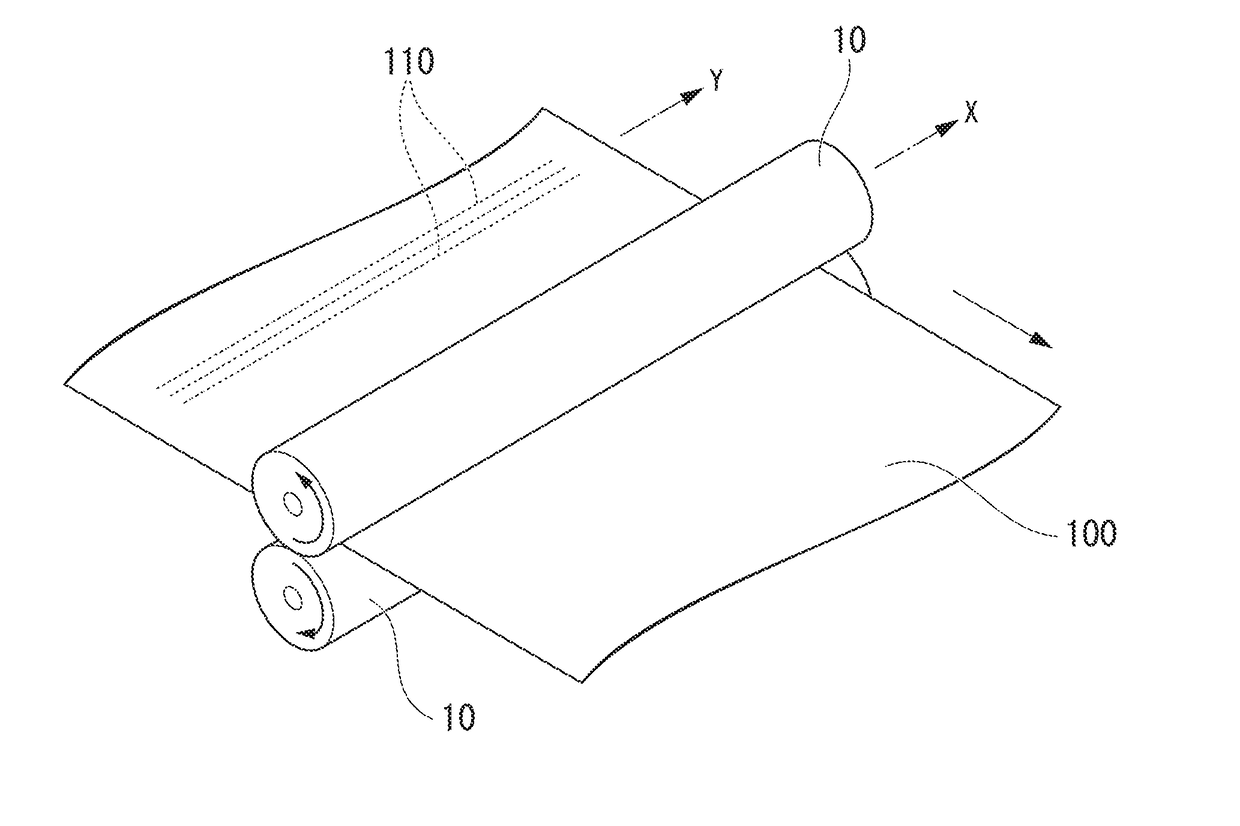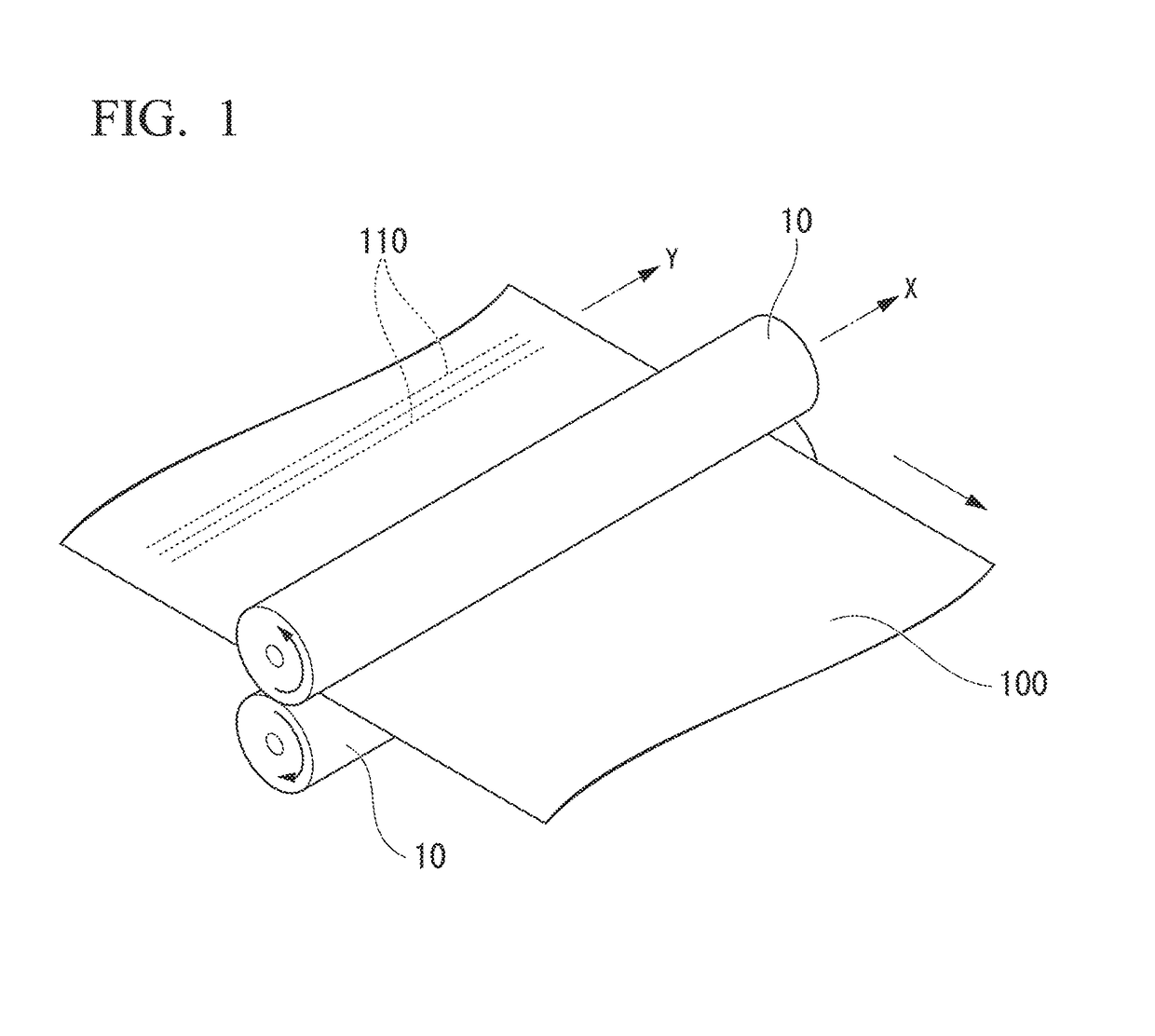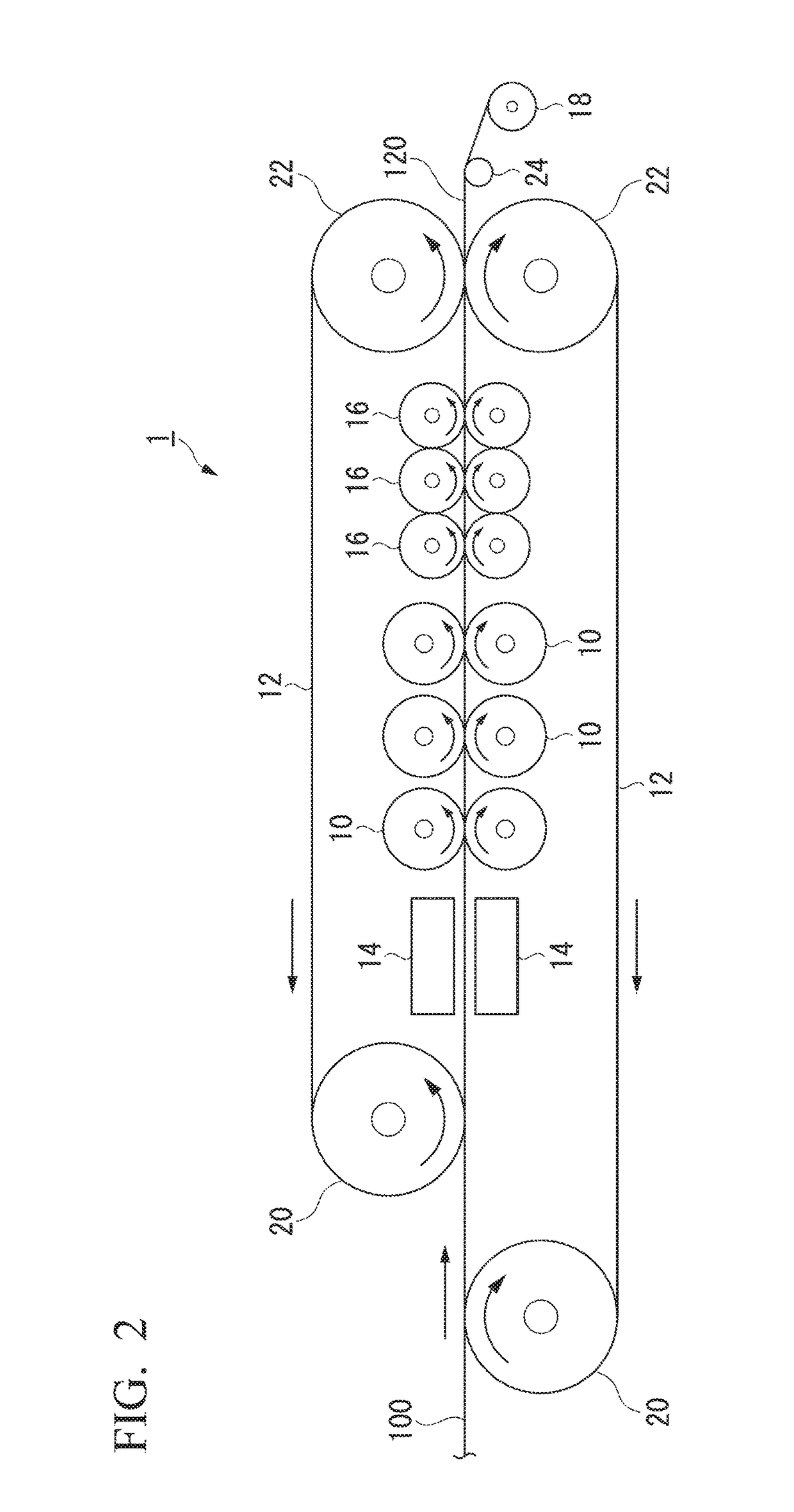Fiber-reinforced plastic and production method therefor
a fiber-reinforced plastic and production method technology, applied in the direction of coatings, liquid surface applicators, wind energy generation, etc., can solve the problems of low fluidity at the time of shaping, difficult to shape the fiber-reinforced plastic into a complicated shape such as a three-dimensional shape, and limited shape of the structural material thus produced, so as to achieve excellent mechanical properties and reduce variation. , the effect of excellent heat resistan
- Summary
- Abstract
- Description
- Claims
- Application Information
AI Technical Summary
Benefits of technology
Problems solved by technology
Method used
Image
Examples
example of embodiments
[0122]In the following description, an example of using a double belt-type heat press machine 1 illustrated in FIG. 2 (hereinafter, simply referred to as heat press machine 1) will be explained as an example of an embodiment of carrying out Step (ii-1) and Step (iii). Meanwhile, the embodiment of carrying out Step (ii) and Step (iii) is not limited to the embodiment of using the heat press machine 1.
[0123]The heat press machine 1 has a pair of belts 12 that cause a band-shaped material (A) 100 to travel in one direction in a state of having the material (A) vertically interposed therebetween; a pair of IR heaters 14 that preheat the material (A); three pairs of press rolls 10 in three rows, which vertically interpose the preheated material (A) 100 and press the material (A) 100; three pairs of warm water rolls 16 in three rows, which vertically interpose the pressed material (A) 100 and cool the material (A) 100; and a winding roll 18 that winds a fiber-reinforced plastic 120 that h...
production example 1
g Substrate-1
[0223]Carbon fibers (PYROFIL TR50S manufactured by Mitsubishi Rayon Co., Ltd., carbon fiber diameter: 7 μm) were arranged in parallel in one direction and in a planar form, and thus a fiber sheet having a basis weight of 72 g / m2 was obtained. Both surfaces of this fiber sheet were interposed between films each formed from an acid-modified polypropylene resin (MODIC P958V manufactured by Mitsubishi Chemical Corp., MFR50) and having a basis weight of 36 g / m2. These were subjected to heating and pressing by passing them through between calendar rolls several times, and the fiber sheet was impregnated with the resin. Thus, prepreg substrate-1 having a fiber volume percentage content (Vf) of 33% by volume and a thickness of 120 μm was produced.
production example 2
g Substrate-2
[0224]Carbon fibers (PYROFIL TR50S manufactured by Mitsubishi Rayon Co., Ltd.) were arranged in parallel in one direction and in a planar form, and thus a fiber sheet having a basis weight of 37 g / m2 was obtained. Both surfaces of this fiber sheet were interposed between films each formed from an acid-modified polypropylene resin (MODIC P958V manufactured by Mitsubishi Chemical Corp., MFR50) and having a basis weight of 45 g / m2. These were subjected to heating and pressing by passing them through between calendar rolls several times, and the fiber sheet was impregnated with the resin. Thus, prepreg substrate-2 having a fiber volume percentage content (Vf) of 17% by volume and a thickness of 120 μm was produced.
PUM
| Property | Measurement | Unit |
|---|---|---|
| angle | aaaaa | aaaaa |
| thickness | aaaaa | aaaaa |
| length | aaaaa | aaaaa |
Abstract
Description
Claims
Application Information
 Login to View More
Login to View More - R&D
- Intellectual Property
- Life Sciences
- Materials
- Tech Scout
- Unparalleled Data Quality
- Higher Quality Content
- 60% Fewer Hallucinations
Browse by: Latest US Patents, China's latest patents, Technical Efficacy Thesaurus, Application Domain, Technology Topic, Popular Technical Reports.
© 2025 PatSnap. All rights reserved.Legal|Privacy policy|Modern Slavery Act Transparency Statement|Sitemap|About US| Contact US: help@patsnap.com



